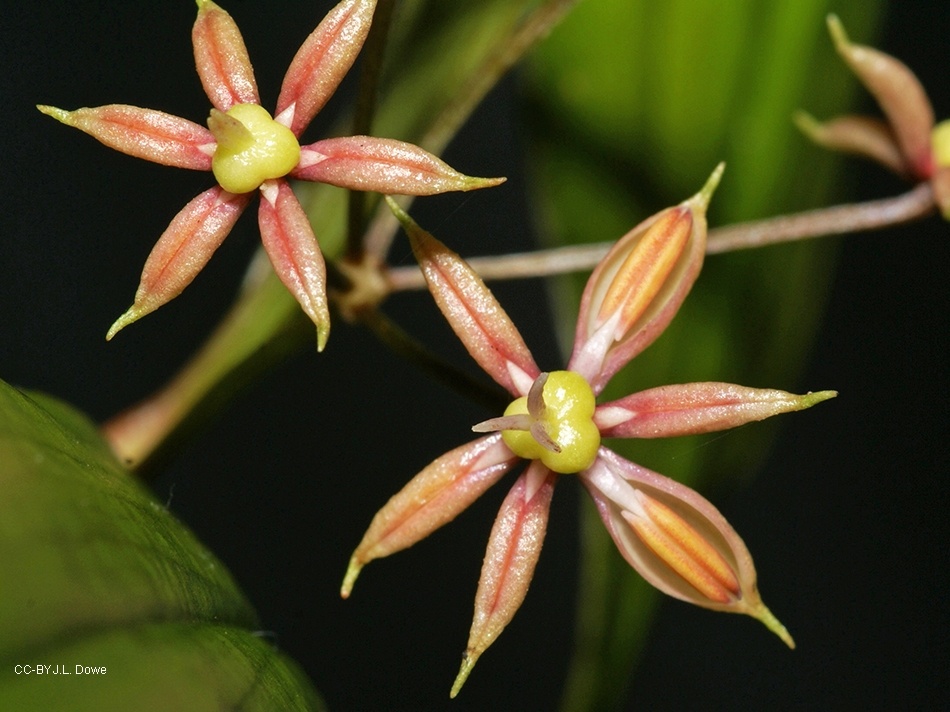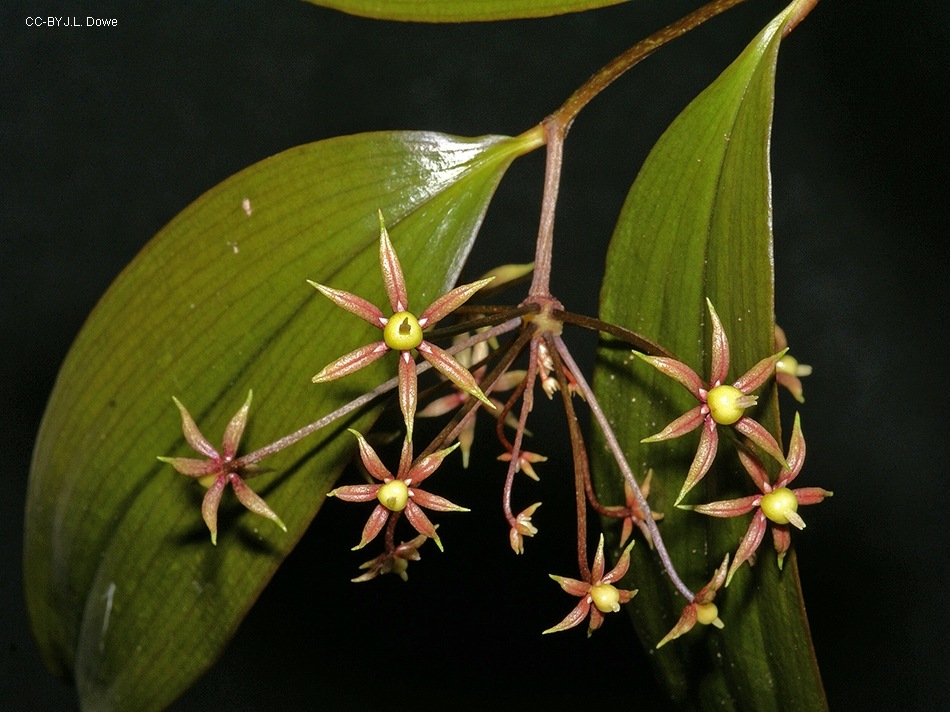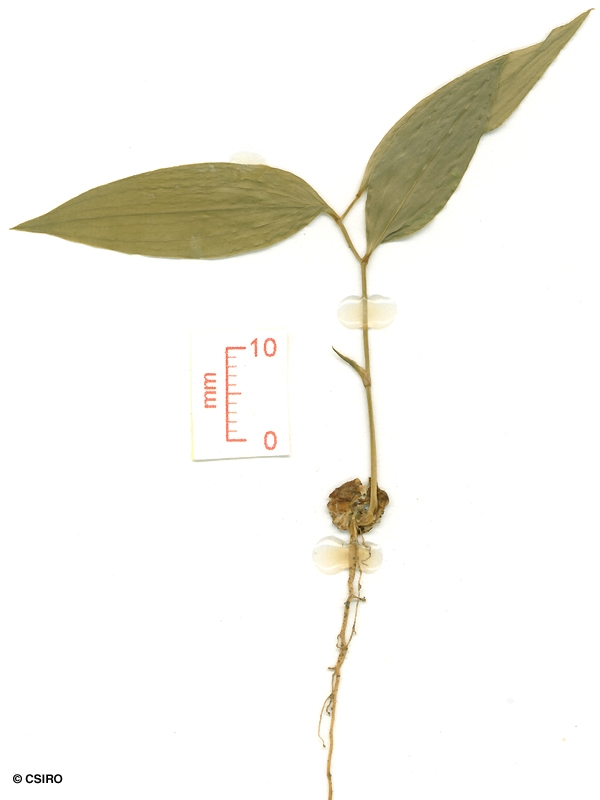Australian Tropical Rainforest Plants - Online edition
Kuntheria pedunculata (F.Muell.) Conran & Clifford





Conran, J.G. & Clifford, H.T. (1987) Flora of Australia 45: 491.
Flowers and fruits as a multistemmed shrub about 1-2 m tall.
Twigs zig-zagged. Leaves +/- distichous with about 5-7 main longitudinal veins including the midrib. Leaf blades about 6-18 x 2-6 cm, petioles about 0.1-0.5 cm long. Reticulate veins run +/- at right angles to the secondary veins like the rungs of a ladder. Petiole grooved or channelled on the upper surface.
Tepals about 7-9 mm long. Stamens about 6-8 mm long, filaments about 3-4 mm long, anthers about 3-4 mm long. Each tepal folded around a stamen in the flower bud but opening to release them as the flower matures. Pollen yellow. Ovary about 3-4 mm diam., ovules numerous in each locule. Style about 1-2 mm long.
Capsule 3-lobed, about 8-15 mm diam., styles persistent at the apex. Seeds white when fresh, about 7-9 x 4-6 mm, irregular in shape. Endosperm hard. Embryo very small, about 0.5 mm long, cylindrical.
Usually one cataphyll, bract-like, about 4-6 mm long. First pair of true leaves triplinerved. Leaf base clasping the stem at a point where it is distinctly bent. At the tenth leaf stage: leaf blade with about 5-7 longitudinal veins on either side of the midrib. Petiole very short. Midrib depressed on the upper surface of the leaf blade. Seedling with two or more stems arising below ground level. Stems narrowly and longitudinally winged. Seed germination time 66 to 210 days.
Endemic to NEQ, know only from Black Mountain, Mt Spurgeon, Pinnacle Rock, Boonjee and the foothills of Mt Bartle Frere. Altitudinal range from 40-1260 m. Grows as an understory plant in undisturbed and disturbed upland and mountain rain forests.
This plant has great horticultural potential and is easily grown in a container indoors or in the ground in a shady position in the garden.





